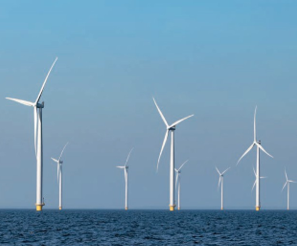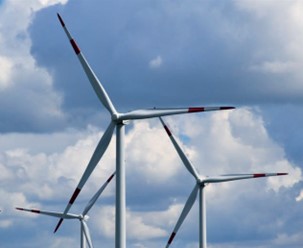
Developing a suite of purpose-driven IP to support the green energy transition.
Business profile
Actively seeking ways to commercialise its existing intellectual property (IP).
Winner of ScottishPower Renewables innovation competition seeing alternatives to grout for jacket installation.
Working with Kent plc and Strathclyde University the business is actively looking for additional joint industry project partners to scale the technology for offshore demonstration.
Support recieved
Grant Funding
Solutions for the offshore wind industry
Composite materials were found to be suitable for consideration as part of the design.
The NGC will significantly cut the time, cost and carbon emissions linked to installing jacket foundations.
A closer look at Napkin
The majority of offshore wind turbines to date have been installed with monopile foundations, suitable for shallow waters. As shallow water sites become saturated, jacket foundations – those better suited to medium-depth water – are required.
The installation of jackets is time-consuming, expensive and achieving a quality joint in-field is difficult to do.
Napkin’s mechanical connector is entirely grout free. It offers a repeatable, reliable process to connect jacket to pile, reducing risk, time, cost, CO2 emissions and environmental impact. Developed and supported by industry sector experts, the design is often described as a’ door wedge with extras’ where the extras are the clever bits of engineering that ensure the loads are transferred properly and that the wedge stays in place.
Impact of the support
The NGC will significantly cut the time, cost and carbon emissions linked to installing jacket foundations.
Composite materials were found to be suitable for consideration as part of the design.
OWGP funded project with the National Composites Centre helped secure follow-on funding from the likes of DESNZ, the Net Zero Technology Centre's TechX and the EU


Before
Prior to engaging with OWGP, Napkin was in the early stages of concept design of its Non-Grouted Connector (NGC).
The company won the Scottish Power Renewables Innovation Competition in 2018 and was confident that using composites as part of the NGC’s design would produce a lighter component which was easier to fabricate and handle. A lighter product that was cheaper to transport could also increase potential export opportunities. The technology was still at a very early stage of development and as composite materials hadn’t necessarily been used in these conditions before, Napkin sought funding to undertake a feasibility study.
During
After securing funding through OWGP’s grant funding programme, Napkin engaged the National Composite Centre (NCC) to undertake a feasibility study exploring the use of composites in the design of its NGC. The project began with a review of all previous modelling, with the NCC concurring with previous conclusions that a design using composite materials was feasible. Napkin and the NCC met on a weekly basis to discuss findings and develop the study, which resulted in the delivery of two reports – the first considering design and material selection, and the second a Life Cycle Analysis highlighting the carbon emission savings.
After
OWGP’s support and the results from the work by the National Composite Centre, was instrumental in securing follow-on funding from the likes of DESNZ, the Net Zero Technology Centre’s TechX and the EU. The business is currently part of the Offshore Renewable Energy Catapult’s Launch Academy Programme.
Working with Kent plc and teams at Strathclyde University’s AMRL, small-scale component testing will be completed over the summer of 2023. The potential to reduce the number of installation days and support carbon neutral goals is generating a great deal of interest in conversations with potential customers. The business is actively looking partners to support a joint industry project to scale the technology for offshore demonstration.
“Working with OWGP, we got more than we bargained for – in a good way! The funding allowed us to access expertise at the National Composite Centre and the findings from that initial feasibility study have allowed us to go on and secure additional funding and partners to help develop and bring the solution to market.”

 BACK TO CASE STUDIES
BACK TO CASE STUDIES 